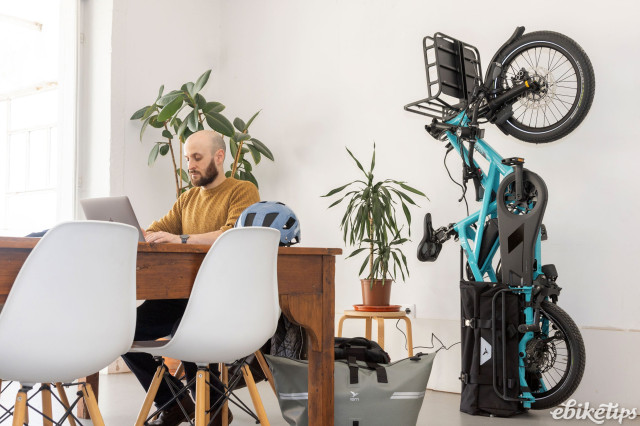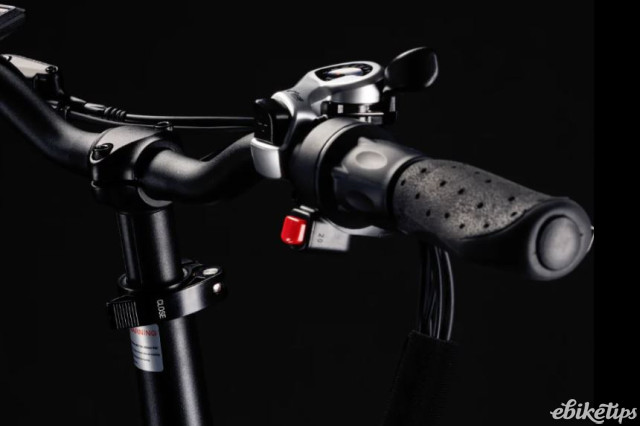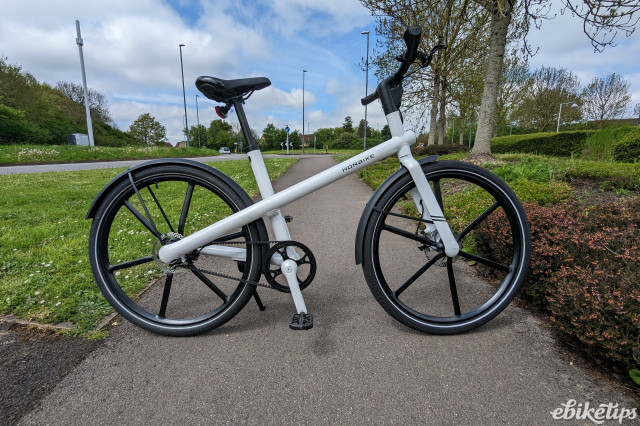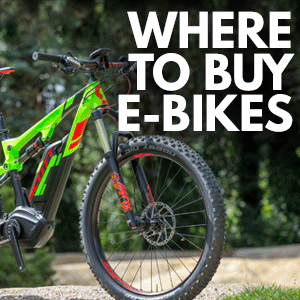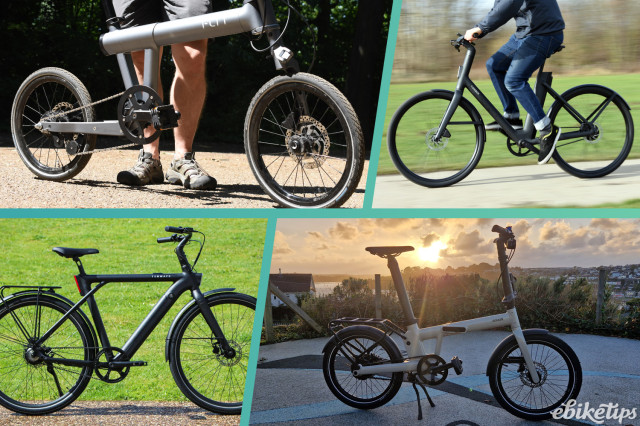Review: Tern GSD S10 (Gen 3)
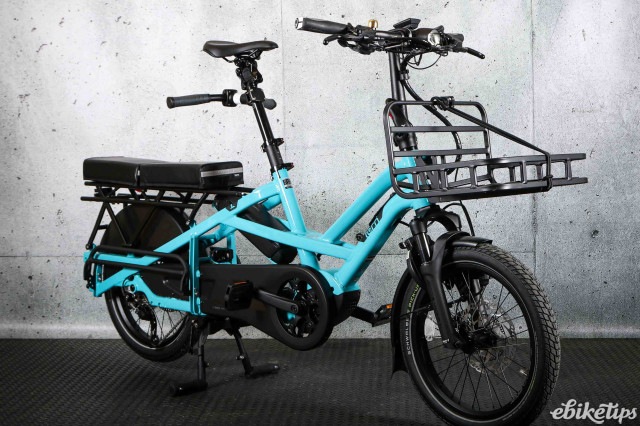
Overview
- Superb build quality
- Easy to ride
- Best range of accessories
- Expensive
- Rattly footrests
- Bosch Smart System a pain for multiple riders
The Tern GSD can be considered the OG of longtail e-cargo bikes, starting a trend almost a decade ago that many have followed. There’s been an explosion of choice in the sector, with bikes in many builds and at different price points. The GSD is still very much at the top of the pile price-wise, but it’s also still a great bike and the third generation is certainly an improvement over the earlier bikes. If you want the greatest number of features and cargo options built into a superb-quality bike, you won’t be disappointed. But there are more ways to spend your money these days: even from Tern.
What’s new? Well, if you believe Josh Hon, Tern team captain, it’s: everything. “Pretty much every aspect of the bike has been redesigned to work better,” he says. However, at first glance you might not notice any difference at all. Certainly when I was riding the bike pre-embargo I didn’t feel like I had to be particularly careful hiding it from prying eyes: Bath is chock full of Tern GSDs (more on that later) and the new beetle blue S10 fitted right in. But there are quite a lot of changes, and to see them it’s best to put the two bikes side by side. So, here’s the new S10 next to the old one:
The first and most obvious change is that the rear rack is no longer part of the frame: it bolts on, in the same way as other newer bikes in the Tern line up, like the Quick Haul Long and the Orox. This no doubt makes the frame easier to fabricate, and it doesn’t affect the loading capacity: in fact the rear rack load limit is up 10kg, to 100kg. The maximum gross vehicle weight is now 210kg, so you can have two 85kg adults on the new bike and still be under that. The maximum rider weight is increased to 130kg, and the new seatpost will accommodate taller riders, up to 200cm. Not that I ever put my seatpost up to full road bike height on a bike like this.
Other changes are less obvious. The higher load limit means that the frame itself has been beefed up, and both the fork and the seatpost are more heavy-duty than the last iteration. The frame and fork are tested and certified to German cargo bike standard DIN 79010 by EFBE Prüftechnik, and the e-bike system is UL2849-certified for fire safety, so you’re getting a bike that’s as safe as you’re likely to find.
The seatpost quick releases have been enlarged so they’re much easier to use, which is a bigger improvement than it sounds, especially for people that don’t have lots of hand or arm strength. The bike is also marginally longer than the Gen 2 with that extra length behind the pilot, for a bit more room which you might be glad of if you’re trying to cram two smaller kids on the back: you can fit 2 new clamp-style child seats from Yepp or Urban Iki on the new rear rack.
The vestigial footrests of the Gen2 bike have gone, and the new S10 uses the same adjustable drop-down footrests as the Orox, which are a cost option (our review bike had them fitted). They’re fine, but they’re pretty rattly on the bumpy city streets and there’s no cinch bolt to hold them tight like there is with the Orox, which is an annoying omission.
Other things that have been updated include some of the bits of the last bike that really weren’t that great long-term. The fiddly, fragile two-piece chainguard has been replaced with a much more sturdy single-piece one, and there’s a new single-piece rear wheel cover too which is also a big improvement. The Atlas locking stand has had a pretty major revamp, and the mechanism, which was prone to getting covered in muck and sticking, now has a natty rubber cover to keep it working in all weathers. The standard feet have been extended too, for a wider footprint.
The front light – which plugged directly into the motor and was a nightmare to replace if it failed – has been updated to a plug-and-play one with a brighter beam. And the worst bit of design on the whole bike – the rubber roller chain tensioner that seized and died with alarming regularity – has been swapped out for a proper jockey wheel. All of these things are issues that you wouldn’t necessarily notice until you were well into your time with the bike so it’s good to see they’ve been picked up and addressed. Tern is clearly listening to bike shops and customers.
The four-model range for this iteration of the bike (only three in the UK for now) is split down the middle: the £5,000 P10 and the P00 (not coming to the UK at time of writing) continue to use the same Bosch eBike System motors and Purion controllers as before. The S10 I’ve been testing, and the £8,900 R14, now use the Bosch Smart System and get a Kiox display and bigger batteries as standard: 545Wh for this S10, and 800Wh for the R14. Like before, the GSD frame can accommodate two batteries, so a capacity of up to 1.6kWh is a possibility for the Smart System bikes if you’re going to be spending all day making deliveries. Another useful new feature is a charge port in the downtube of the frame to make charging up much easier.
I’m a bit ambivalent about the Bosch Smart System, to be honest. I’ll get to that, but I will say that I love the Kiox 300 display: it’s neat, clear and compact, and gives you loads of information, including – most importantly – proper granular battery status. On my Purion-equipped bike, two bars of battery could be anything from 21% to 39%. The latter of those will see me happily to Lidl and back for a weekly shop, while the former will have me swearily pushing a 35kg bike and the same weight of shopping up the steep bit of the hill home. So it really matters that I can immediately see exactly what’s in the tank. Other stuff like power, cadence, time in different modes and the like is fun to look at if you’re a bit of a stats nerd like I am, but you’d hardly call it critical. It pairs with a smart remote which gives you mode and information buttons and a charge level indicator which is entirely redundant, and lights up the colour of the assist mode you’re in. Functionally it’s fine: the buttons fall to hand nicely and are positive-feeling.
To properly use the Smart System – for features like smart locking of the e-bike system and navigation through the Kiox display – you need to pair it with a smartphone. Which is all well and good, but the GSD is exactly the kind of bike you’ll be getting for more than one person in your household to ride. I’ve had a second-generation GSD in the shed for ages now and anyone in the household – myself, my wife and both of our kids – might use it to get about. Once you’ve linked the bike to a specific phone it can’t be linked to another phone as well, and switching the ownership between handsets – even if everyone’s using the same app login – is time consuming and annoying. For that reason I don’t generally pair my phone with Smart System bikes. The features that it enables aren’t that useful to me anyway: I’m rarely going anywhere on a cargo bike that I’d need directions to, and the smart lock functionality is only ever going to be as an add-on to a beefy chain or D-lock. The wheel lock is useful for a quick shop dash though.
What’s the GSD like to ride? Well, like its predecessors, it’s easy to get used to. Despite being a heavy thing it feels a lot like a normal bike and there’s no real learning curve; most people will find it an easy bike to pilot. The low-step frame means it’s easy to get on and off, and the telescopic seatpost and Andros quick-release stem at the front make it easy to tweak your riding position with no tools. The slightly longer wheelbase and the stiffened frame and beefed-up components haven’t really affected the ride feel or the ride quality to any great degree, which is no bad thing in my opinion.
The new Mobie 34 fork at the front is chunkier than on the last bike and the damping feels a bit more refined too. I didn’t mind the fork on the second generation bike but this one feels better made, and the sealing on the old fork isn’t the best (mine’s a rigid fork now). As well as that, the new Atlas VLT seatpost has an elastomer suspension unit that softens up the back a bit too. You used to get that on the more expensive bikes in the range, which I guess this now is, even though in terms of the actual drivetrain it’s comparable to the S10 I’ve been riding for ages, with a Shimano Deore 10-speed derailleur setup that gives a perfectly usable range of gears.
You’d never say the GSD was a particularly exciting ride but it’s stable and predictable. Loading up the back end with shopping, which tends to sit low in panniers, barely affects the bike’s handling at all, save for making it feel a bit more sluggish. If you’re putting kids on the back and the weight is sitting higher you need to be a bit more careful with balancing the weight, especially when stopping and starting; the wider Atlas stand will be a big plus there.
One of the main advantages of a bucket bike like an Urban Arrow or R&M Packster over a longtail is that the cargo weight is always low down, whether it’s kids or shopping or a tip run. There are disadvantages too though, of which one of the main ones is size. That’s a big plus point for the GSD: the footprint is no bigger than a standard city bike so it’s easy to fit in a garage or shed.
Even better than that: the handlebars and seatpost pack down easily and that makes the bike narrower and lower, which allows it to fit in a smaller space. And if even that’s not enough, the GSD will stand on its end, so if all you’ve got is the corner of a room to store it, it’s still a possibility. Assuming you have a fairly level entry to your home, that is: at 36kg this is not a bike you want to be hauling upstairs. Ever.
The GSD comes with a Bosch Cargo Line motor. Ours was pre-production and the motor had the wrong cover which is why it looks like a CX motor in the pics. With a claimed 85Nm of torque and a maximum 400% assist, it’s a punchy motor and I can sail up my commute hill home (1.5km at 5% average with a 12% section) without ever breaking a sweat.
The Kiox power display is useful for seeing how much work you’re actually doing: I could get home in maximum assist mode with barely 100W coming from my legs, which is a very long way from being hard work. The 545Wh battery would do four laps of my 9km commute (with 150m of climbing on each) on full gas before needing a charge. That’s what I would expect given the weight of the bike and the fact it was pretty cold when I had it; the long hot days of summer would eke an extra lap out of the same charge. Being more judicious with the assist you’d easily get 50km from one charge in most places. Although possibly not Bath, which by dint of being the home of Tern super-dealer Avon Valley Cycles and also its topography (and demographics, no doubt) has a higher number of GSDs per inhabitant than any other place in the world. That’s how it feels anyway. You can’t ride into town without seeing at least a couple.
Perhaps the most notable feature of the Bosch Smart System on the new GSD S10 is that it includes Bosch’s anti-lock braking system on the front wheel. Bosch first introduced this in 2017 but it’s fair to say we haven’t seen it on loads of bikes since. The GSD is a good candidate for it for a couple of reasons. Firstly, because of the nature of a longtail, you’re likely to have more weight at the rear, which could unload the front wheel to a degree. Secondly, that weight might be a valuable cargo of kids, so anything that helps you stay upright is welcome.
I’ve ridden a GSD for a number of years and thousands of miles, and the number of times I’ve washed out the front wheel and ended up in a heap is holding steady at zero. But you can make the front end misbehave if you brake on gravel or something else slippery, so it’s not impossible you’d need the assistance of the ABS. I spent a fun half hour seeking out slippery grass and gravel to test it on, and I can confirm that it’s quick to respond when it senses that the front wheel has lost grip. Even when you’re actively trying to make the front wheel wash out with a combination of aggressive steering and heavy braking, it’s pretty hard to actually make it happen, so that gives me confidence that should it ever need to work in a real-world situation, it would.
The point of having a cargo bike is carrying things, and I think it’s fair to say that Tern’s ecosystem of bags and bits is better than any other manufacturer’s in terms of its breadth and quality. I had the bike supplied with Tern’s Cargo Hold 52 panniers, which will hold more shopping than I’m ever prepared to buy and are brilliantly designed and superbly made. I also had a Transporteur rack on the front which holds Tern’s Weathertop shopping bag that can be rolled closed to be fully rainproof. That’s great for smaller shopping trips and also somewhere I throw a lock and a waterproof just in case I get caught in a shower. On the back I also opted for a bench seat and footrests for dropping my son down to sixth form (at over 2m tall now, and 93kg, he has outgrown his child seat somewhat). I can confirm that in terms of height at least, there’s basically no living human you can’t sling on the GSD rear rack.
So many other options are available. You can fit two child seats. You can fit a Clubhouse rail for bigger kids. You can add a Storm Box which turns the back into a huge bucket, and there’s the fully enclosed Storm Shield if you’re committed to the school run whatever the weather. You can fit a trailer hitch to the back, or a bike hitch if you want to tow another bike. There are dog baskets. There are KLICKfix-compatible front mounts. You can pretty much carry anything. None of the accessories are cheap: the panniers, which I’d pretty much class as a necessity, are £265. In total, I had an extra £900 of accessories on the bike in total, and you need to be factoring that into your decision.
Money, then. You can’t review a £5,900 (base price) bike like this without talking about value. I’ve no doubt that the build quality of the Tern is second to none in this sector, and the fact that it’s fully cargo-bike- and fire-certified buys you some peace of mind. You’re getting the latest iteration of what for me is the best e-bike system, and you’re getting ABS into the bargain too. All the accessories, expensive though they are, are among the best you’ll find. Tern is also committed to a seven-year product cycle for this bike, which means that you’ll be fine for any spare parts well into the next decade. And a bike like this is certainly going to last.
Is it worth six grand? The age-old question! The longtail e-cargo sector is a very different place to when the first GSD launched: back then if you wanted a longtail e-bike you could buy the GSD… or not buy it. Other than that, you were more or less out of options outside boutique makers. These days you have a lot more choice, and the good bikes are getting cheaper.
The Estarli eCargo Longtail packs a belt drive, 100Nm Ananda mid motor and Enviolo CVT hub into a bike that costs not much more than half the price of the GSD S10. It also has a decent ecosystem of cargo options for kids and stuff. The Engwe LE20 struggles a bit more where accessories and luggage are concerned, but heck: it’s only just over half the price of the Estarli and is genuinely a decent bike to boot, with an enormous battery. And of course, you’ve got to factor in one of the main reasons that the GSD has gone a bit more upmarket even than before: Tern has launched the Quick Haul Long underneath it, and that bike does a great many things that the more expensive GSD does, and takes the same excellent range of accessories. It’s not as refined, and you can’t fit two batteries, but most people really won’t need to. There are plenty of others too, from big manufacturers and small.
Looking at the GSD from a purely what’s-in-Tern’s-range point of view, it’s really no surprise that they’ve tried to move it up the price points a bit. The QHL is going to hoover up a lot of Tern’s sales: unless you really need a dual-battery setup or the peace of mind of ABS, it’s likely to turn your head. As it should be, the GSD is the better bike: sturdier, nicer to ride, with higher quality components. If you’re committing to a cargo bike instead of a car – be that getting rid of your main car, or a second or third car – you’ll make your six grand back in a couple of years on insurance, fuel, parking, taxes, depreciation… Looked at that way it’s easier to justify. Or maybe the money’s not such a big issue and you just want the best longtail out there. For me, the build quality, motor choice and accessories ecosystem of the GSD still has it at the top of the pile, and the new third generation bike is the best one ever.








